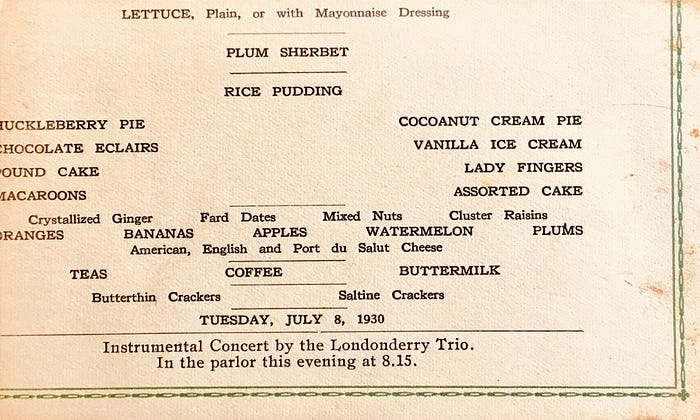Research Report #50 — Wood Rat

For many years scientists and naturalists have been studying and observing the flora and fauna of the Shawangunk Ridge. Foremost among them was Daniel Smiley, for whom Mohonk Preserve’s Daniel Smiley Research Center is named. Dan wrote numerous reports summarizing his observations on various topics. This regularly occurring series will feature some of these reports; some hold tremendous scientific value today and just await an interested researcher to follow up, others showcase a quirky sense of humor or highlight an oddity of nature.
Read the Reports:
Cave (Wood) Rat (Neotoma magister). May 1977. Daniel Smiley. TMT Woodrat Field Trip Report, November 1980, Stacey Pilarinos.
Supplement to Research Report, June 1978, Daniel Smiley.
A Note from Paul C. Huth, Director of Research Emeritus: Every now and then over the years, someone would ask Dan Smiley and me if we had ever documented any native species that had been lost over the years, and of course the opposite, if we have any new species that have appeared. We could say yes on both accounts. Documented new species I always felt was an easier question to answer, for species are always testing new ground and sometimes staying, as Dan would say, like the Tufted Titmouse, Northern Cardinal, Black Vulture, and the Red-bellied Woodpecker. But the loss of a common native species is a different story, and whose cause needs to be investigated to ascertain if there are fundamental changes to the system, possible management implications, and potential impacts for other related species.


In this Research Report, Dan presented his records documenting observations of the “Cave (Wood) Rat (Neotoma magister),” and it’s surprising total loss during the 45 years of his observations. The Allegheny Woodrat, as it is now called, after a presence of “thousands of years” is essentially extirpated in New York State. Dan “was the first to notice that the Allegheny woodrat was in decline in the state,” and report it to state researchers.
The first documentary records for Allegheny Woodrats in New York State date to about 1850, “captured….near Piermont, on the Hudson River.” In Dan’s Species Card File, Dan cites an 1898 Edgar A. Mearns reference of an October 30, 1894 record of “the capture of a specimen on Storm King Mountain, Cornwall, Orange County, N.Y., about fifty miles north of New York City, and about forty miles north of Piermont”. The habitat was “wooded with young second growth trees”, “the place of capture was at the base a cliff, thirty to forty feet in height….full of deep crevices, (with) a talus of loose stones at its base.”

Dan reports his first knowledge of this species at Mohonk in June, 1930 at Sky Top, “noting the droppings on the ledges….near the Duck Hawk nesting site. These became more familiar by observing with flashlights and by means of flash pictures taken by H. H. Cleaves.” One of the most vivid accounts of woodrats up close is a four-page handwritten note by Dan’s brother Keith, from July 26, 1931, of a nighttime field excursion to Sky Top with Dan and Mr. Cleaves, “supplied with three flashlights and various tempting morsels of rat bait”. They arrived “before dark at the ledge on the east face of the cliff, below which the duck hawk nest had been located the year before.” “The plan of action….was carried out to the letter….a part of the newspaper was spread out flat in a well-worn rat runway and a small amount of food sprinkled over the surface, while larger pieces were wrapped up as ‘favors’ in pieces of newspaper so that considerable noise would be caused by the rat attempting to ‘unwrap’ the parcel….”. “We did not have long to wait.” “We soon had the pleasure of watching him sit up and eat squirrel-fashion before our eyes in the direct light of the electric torches.” “This is an experience, undoubtedly, which few have had.”

In 1930, Dan documented a woodrat den site “at the bottom of a conglomerate talus slope just beyond the south end of Mohonk Lake. A female was live-trapped there and kept in a cage in my office for four years of observation,” with Dan’s characteristic extensive notes made and kept on file. On 15 August 1932, a male was “trapped in the Greenhouse.” It became study skin M.M. #581, and is one of our oldest specimens in the mammal collection at the Mohonk Preserve’s Daniel Smiley Research Center. A large male specimen, caught in 1940, was sent to Albany, to Dr. Dayton Stoner, New York State Zoologist, at the New York State Museum, and it became NYS Specimen №6132.

On 16 June 1949, Dan had an interesting “cliff rats” report from climber Earl L. Poole, from the Reading Public Museum, and his observation “some three miles east of Mohonk Lake….(where) Toward the top of the cliff, I noted various plants of Corydalis….which had been clipped off a few inches from the ground. Nearby, under overhanging rocks, I found various scattered piles of this Corydalis cut into various lengths from four inches to a foot. The plants were quite well dried, although still green in color and had a rather aromatic odor. As a farmer I would call them good hay….I began to wonder if the rats were not responsible for this hay-making….”

In the 1950s, Dan noted that “Cave rats were trapped in the cellar of the Mountain House, and at four outlying buildings,” including The Lindens, The Elms, Oak Cottage, and the Lower Spruces! On 5 December 1958, a large male woodrat was trapped in the “lower linen room at the House.” It became DSRC specimen M.M. #761. On the label, Dan noted that, as a pack rat, it “Had taken 12+/- cakes of Ivory soap”!
In the 1960s, Dan reports “no records were made of trappings or observations….except for 1967,” when an active den was reported by “a neighbor on Clove Road,” near Knob Hill Road, in “the former Chris Schoonmaker Place.” The animals were at home in the house, and between visits by new owners, had “moved things such as candle sticks” (relative large Mexican ones, per Barbara Rubin) upstairs to where they were found in the bathroom behind the toilet. Bob Larsen told Dan that in 1967, several were trapped there, “including an albino.”

On 6 November 1973, Dan noted woodrat “droppings seen northwest of Zaidees Bower on (the Mohonk) Trust (boundary) line. Since Dan was alarmed that observations of this once common species were not being noted, in 1977, field trips “were made to all of the old scat sites” near Mohonk, including the south end of Mohonk Lake, Rock Pass, Sky Top, Cope’s Lookout, the Rock Rift Crevices, and Chestnut Spring. No active use was found. Dan reports, “These discoveries, together with the absence of rats during the (extensive Peregrine Falcon) hacking-back periods leave the question of why the decrease in cave rat numbers.” In assessing possible causes, Dan wondered if it could be a “normal fluctuation,” “changes in climate,” or if they “were….faced with a new form or different degree of predation. My hypothesis is that the increased population of raccoons created a population stress that the wood rat population could not withstand.” As a result of his concern for the major decline of this once common species, Dan corresponded with other researchers and conservation biologists, sending copies of his Research Report, and in May, he sent a copy to staff at the New York State Department of Environmental Conservation.

As a Supplement to the May 1977 Research Report, in June 1978, Dan summarized his records from 1930 to 1978, of “sites of nests and scat piles” from his Species Card File. In summary, Dan reports “Of the 22 sites listed, ten were checked in the last 15 months. Only one — in the Ellenville Ice Caves showed evidence of current use by Wood Rats.” Again in 1980, from May to October, Dan and TMT staff checked the 15 locations on Mohonk Mountain House and Mohonk Preserve lands where regular woodrat activity had been noted in the past to check for fresh use and scats. None was found. The New York State Department of Environmental Conservation, Endangered Species Unit, reported in 1980, that “biologists knew of only five extent sites (in the state), the last of which became extirpated in 1987.” The species was placed on the state’s endangered species list.

In 1990, to try and understand the possible causes for the extirpation of the Allegheny Woodrat, researchers from the NYS Department of Environmental Conservation Endangered Species Unit, in partnership with the Mohonk Preserve, initiated a multiyear field research project on Preserve land at Bonticou Crag. This project entailed the capture and transport of some thirty animals from an extent population in West Virginia to the Shawangunks, where each was fitted with a radio transmitter collar set to an individual frequency, and released at historic den sites on 9 September 1991. Each animal was closely monitored. Within a year, all the released animals, including offspring, notably “the first documented in the Shawangunks since 1980–81”, had died. Of a dozen animals recovered with the aid of the transmitter collars, 11 were able to be necropsied by DEC pathologists to determine the cause of their death. In all of these animals, the result was revealed to be the same, a roundworm (Baylisascaris procyonis) surprisingly related to the Raccoon! Woodrats, occupying in part some of the same sites as Raccoons, were in contact with Raccoon dropping which harbored the eggs of the roundworm. So, Dan’s “hypothesis”, that the woodrat decline might be related to “the increased population of Raccoons” was correct, but in a complicated way related to individual species behavior and life history.

The DEC Endangered Species Unit position, as a result of the revealing research at the Mohonk Preserve, is that the woodrats “chance of returning appears bleak at this time as it would seem to require a substantial and long term decline in raccoon numbers.” As for the raccoons “ability to thrive near human development, our endless inroads into rural landscapes and trends away from raccoon hunting and trapping, we have unintentionally stacked the deck against this harmless resident of the rocks.”
At the end of his 1977 Research Report, Dan felt, as we all now do, “If this member of the Shawangunk fauna has been lost, it is regrettable!”
Read the Reports:
Cave (Wood) Rat (Neotoma magister). May 1977. Daniel Smiley. TMT Woodrat Field Trip Report, November 1980, Stacey Pilarinos.
Supplement to Research Report, June 1978, Daniel Smiley.
